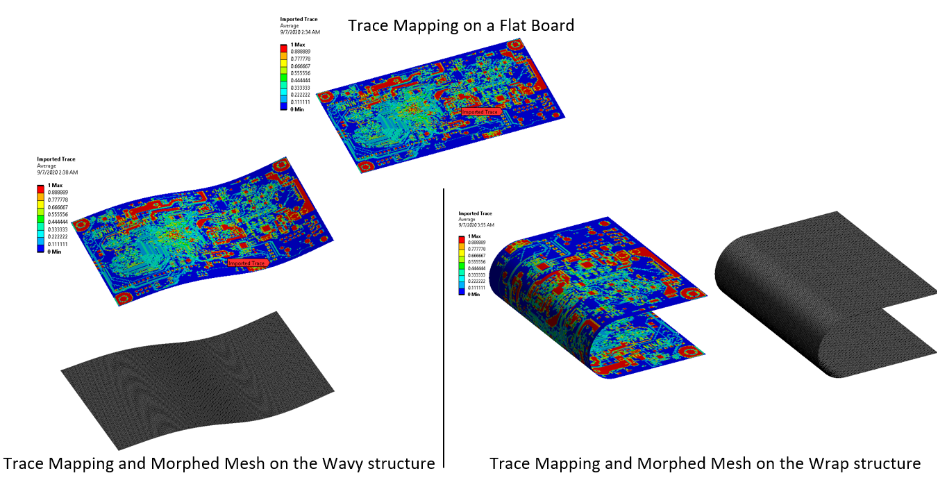
Modeling flexible/curved PCBs using RBF mesh morphing
Abstract: In the recent past, flexible printed circuit board (PCB) electronics have seen a significant surge in many electronics products ranging from smartphone/watches that wrap around our wrists, displays that fold out as large television sets, reconfigurable electronics that conform to the roofs/trunks of cars or as flexible implants that can monitor and treat diseases. Whatever the need is, it is quite evident that the near future is bound to see a significant uptick in day-to-day usage of such electronic products and hence as a direct result there is a need for numerical modeling, simulation and analysis of PCB’s that conform to different shapes. However, given the complexity of PCB’s, numerical modeling of such structures remains a challenge and there is a need for a clear and simple methodology to accomplish this.
In addition, the developed methodology should also be applicable to both the trace mapping and trace modeling techniques typically used while working with Electronic-CAD files.
In this work, the RBF (Radial Basis Function) method has been presented as a capable technology that can morph the flat mesh electronic data to a curved space which can be further used for analysis purposes. Since the morphing is being directly implemented at the mesh level, a lot of obstacles and complexity typically encountered while generating curved PCB CAD files can be avoided.
The RBF Morph ACT Extension has been the tool of choice in the current context. This extension was built on the modular architecture of the ANSYS Workbench and is hence deeply integrated into Mechanical which makes it easy to work with. While RBF Morph offers a wide range of morphing capabilities, a 2-step morph process which relies on an auxiliary body and 2D coordinate filtering technique has been identified as most reliable technique of choice for most curved geometries. The morph technique developed has been successfully applied to a wide range of curved structures which include solid PCBs as well.
Our paper is available on IOP Conference Series: Materials Science and Engineering: doi:10.1088/1757-899X/1038/1/01208.



